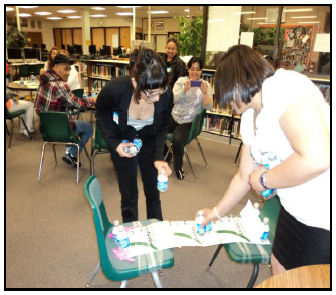Introduction
A key factor associated with academic success and dropout prevention is parent involvement. In order to help families succeed in school, Cooperative Extension offers the Together for a Better Education program. The program brings together partners from high schools, local colleges, families of 9-12th grade students, college-age mentors, local nonprofits and UNCE staff. The program consists of six sessions held in English and Spanish in various locations across Las Vegas. This fact sheet provides an overview of Session 1: Making Education a Family Goal.
Parental Involvement
What does parental/family involvement in a child’s education mean?
It is the active involvement of the parents and/or family to ensure children receive a good education. Parental/family involvement takes place in the home and in the school (Gonzalez-DeHass, Willems, & Holbein 2005).
How to be involved in your child’s education
At Home:
- Make sure they do their homework every day.
- Limit television viewing and video games until the homework is completed.
- Have a comfortable quiet place for homework.
- Talk with your children about higher education and other plans for the future.
- Help your children plan for the future.
- Have high expectations for your children’s academic career.
- Utilize school resources (e.g. Parent Link) to monitor your child’s progress in school.
- Provide opportunities for your child to apply academic skills at home (e.g. math conversations regarding measuring and other skills in recipes or home repair projects).
At School:
- Attend school activities in which your child participates.
- Attend parent-teacher conferences.
- Meet with the administrative staff at school to talk about your children.
- Meet with school counselors to talk about the future of your children.
- Participate as a volunteer at school, if possible.
The Monetary Impact of Higher Education
Although most people understand the importance of having an education, it may not be clear how much of a difference an education can have on earnings and quality of life.
How much do you think the average person without a high school degree earns per hour? On average, a person who:
- did not graduate from high school makes $8.65 per hour
- graduates from high school makes $12.50 per hour
- graduates with a bachelor’s degree makes $25.00 per hour
- graduates with a master’s degree makes $30.25 per hour
- graduates with a doctorate degree makes $41.35 per hour
(Bureau of Labor Statistics, Current Population, Survey 2009)
Based on these figures, the more academically educated you become, the higher your earning potential will be!
Median Weekly Earnings and Unemployment Rates by Education
The chart below shows an individual’s lifetime earning potential based on education:
A higher education allows you to have a more comfortable lifestyle. Also, people who are prepared academically are able to find better jobs which offer:
- 401K Employer Match Contribution
- Life Insurance
- Health Insurance
- Dental and Vision Insurance
- Paid Vacation
- Annual Leave
- Higher Job Satisfaction (Baum, Ma & Payea, 2010)

In conclusion, recognizing the benefits of a higher education is only the first step. Everyone in the family can be involved in making higher education a reality. When parents and families get personally involved in education, children do better in school and are more likely to accomplish their educational goals.
Source: North Carolina Cooperative Extension. Together for a Better Education Facilitator Manual.
To learn more about this topic and the “Together for a Better Education” Program, contact: Nora Luna at (702) 940-5420 or lunan@unce.unr.edu.
References
Baum, S., Ma, J., & Payea, K. (2010). Education pays: The benefits of higher education for individuals and society. New York: College Board.
Bureau of Labor Statistics, Current Population Survey (2009). Downloaded from Earnings by education. Washington DC: United States Department of Labor.
Bureau of Labor Statistics, Current Population Survey (2011). Education pays. Downloaded from: Unemployment rates and earnings by educational attainment. Washington DC: United States Department of Labor.
Gonzalez-DeHass, A., Willems, P., & Holbein, M. (2005). Examining the relationship between parental involvement and student motivation. Educational Psychology Review, 17(2), 99-123.
North Carolina Cooperative Extension (2011). Together for a Better Education Facilitator’s Manual. Downloaded on August 12, 2011. North Carolina.

Program participants building a bridge from high school to college.

Funded by the U.S. Department of Education and brought to you by the Nevada System of Higher Education (NSHE)
Luna, N.
2011,
Making Education a Family Goal,
Extension | University of Nevada, Reno, FS-11-42


